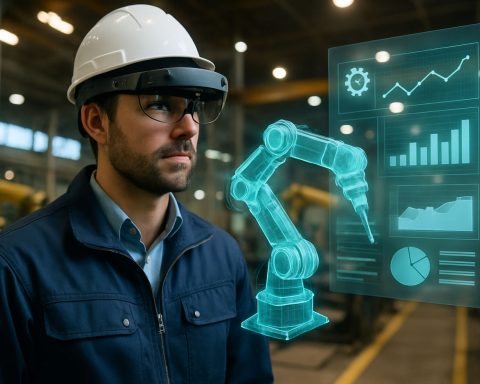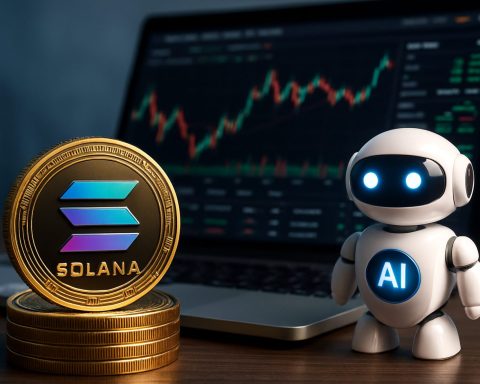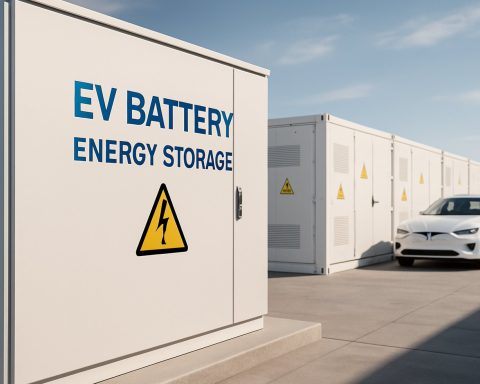- Tesla’s affordable Model Y, also known as E41, faces delays, with release now expected in late 2025 or early 2026.
- The production cost of the new Model Y is anticipated to be 20% lower, potentially reducing its market price and increasing its accessibility.
- Tesla is shifting focus toward innovative projects like an ambitious robotaxi platform to maintain its competitive edge amidst emerging challenges from rivals, particularly in China.
- Economic factors, such as tariffs, are influencing Tesla to adjust its strategies, emphasizing localized production to reduce costs.
- Delays in the Model Y release may provide a window for competitors to advance in the affordable electric vehicle market.
- Tesla’s challenge remains balancing pioneering technology with the mission to make EV ownership accessible to a broader audience.
A roaring promise once echoed from Tesla’s gigafactories now seems to have taken a detour into the land of uncertainties. The much-anticipated release of Tesla’s affordable Model Y—cleverly masked under the enigmatic codename E41—has been pushed back, shifting tentative timelines to late 2025 or early 2026. This marks a significant delay from earlier projections that Tesla, the electric car trailblazer, would mold the future of budget-friendly EVs by the first half of 2025.
The new Model Y, envisioned as a leaner and meaner sibling of its current form, is expected to cost approximately 20% less to produce. If the dream stays on course, this could place its price at a tantalizingly lower bracket, enticing a larger audience to contemplate going electric. A lower sticker price could indeed carve new inroads into the mainstream market, much like a bright comet streaking through the night sky, drawing a chorus of intrigued onlookers.
However, Tesla’s gaze increasingly seems to drift toward the siren call of avant-garde future projects, chiefly among them an ambitious robotaxi platform. This shift in focus underscores a broader strategy: maintain leadership in an automotive revolution teeming with agile competitors, particularly those from China. These emerging challengers are relentless, often rolling out vehicles that are not just affordable but brimming with advanced features.
The economic climate adds another layer of complexity. Trade policies, like the 25% tariff on imported vehicles and auto parts, have nudged Tesla to recalibrate its production lines, localize its supply chain, and thus curb costs. Resultantly, pressure mounts to deliver on affordability without compromising the brand’s hallmark innovation.
Amidst these turbulent waters, one can’t help but wonder if Tesla’s hold over the affordable EV narrative is loosening. The market’s pace does not forgive lulls. Every delay opens the door wider for rival automakers to seize the mantle of affordability, crafting electric dreams that may beckon the very customers Tesla hopes to capture.
The question looming large: Can Tesla balance its roster of technological wonders with the no less daunting task of democratizing EV ownership? Answers may not come in whispers but rather in the mosaic of consumer choices, policy shifts, and Tesla’s own dance with destiny.
Tesla Model Y: What the Delay Means for the EV Market and Beyond
Tesla’s Affordable Model Y Delay: What It Means for Consumers
The delay in the release of Tesla’s affordable Model Y, now expected in late 2025 or early 2026, poses significant implications for the automotive industry, especially as Tesla faces increased competition from other electric vehicle (EV) manufacturers, particularly those from China.
Key Insights & Market Trends
– Challenges in Production and Innovation: The production of a more budget-friendly Model Y aims to reduce costs by approximately 20%, potentially increasing accessibility. However, achieving this without compromising quality remains a crucial challenge, especially amid global economic uncertainties and fluctuating trade policies.
– Rising Competition: While Tesla repositions, competitors such as BYD and NIO are rapidly scaling their capabilities, introducing affordable models packed with advanced features. The landscape includes formidable players working as disruptors, much like Tesla once did.
– Economic Environment: Tariffs and the pressure for localized production are reshaping automakers’ strategies worldwide. For Tesla, balancing costs without undermining innovation is vital to maintaining its market share.
How-To Steps & Life Hacks for Aspiring EV Owners
1. Think Long-Term: While the Model Y’s delay may dishearten potential buyers, EVs are an investment. Evaluate your long-term savings on fuel and maintenance costs.
2. Consider Alternative Brands: If you are in the market for an immediate purchase, explore other brands. Many competitors now offer EVs with competitive pricing and features.
3. Stay Informed: Regularly check updates from Tesla and unbiased automotive news sources to stay informed about new releases and technologies.
Real-World Use Cases
– Urban Commuters: Affordably priced EVs like the upcoming Model Y can provide cost-efficient solutions for city dwellers—lowering emissions and reducing dependence on conventional fuels.
– Fleet Operators: Businesses can benefit from lower ongoing costs by transitioning to a partially or fully-electric fleet, utilizing advanced models when available.
Pros & Cons Overview
Pros:
– Potentially reduced costs enhance EV accessibility.
– Expanded technological features in future rollouts.
– Strengthened production processes due to localized manufacturing.
Cons:
– Delay provides market opportunities for competitors.
– Uncertain macroeconomic conditions may affect final pricing.
– Consumer anticipation and brand loyalty might wane with prolonged waiting periods.
Security & Sustainability
Tesla’s focus on enhancing production processes through sustainability has been a cornerstone of its operations. Strategies involve transitioning to greener manufacturing methods and expanding the use of renewable energy, which aligns with global sustainability targets.
Actionable Recommendations
– Expand Brand Horizons: Evaluate all market options before committing to an EV purchase.
– Engage In Community Discussions: Join EV forums to understand trends and get real feedback.
– Leverage Incentives: Remain informed about federal or local incentives for purchasing EVs.
For in-depth insights into evolving EV landscapes and automotive forecasts, visit Tesla. This will ensure you are informed about upcoming releases and strategic moves by Tesla and others in the industry.
Given the current market trajectory and consumer demand, staying informed and adaptable proves critical as we navigate the transformative EV era.











